Posted on October 4th, 2017 by Mary Lord
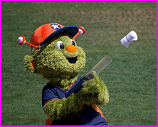 Students follow the engineering design process to design and build a usable device to propel school T-shirts up into the stands during home sporting events while keeping costs under budget.
Students follow the engineering design process to design and build a usable device to propel school T-shirts up into the stands during home sporting events while keeping costs under budget.
Read More
Filed under: Class Activities, Grades 6-8, Grades 6-8, Grades 9-12, Grades 9-12, Grades 9-12, Lesson Plans | Comments Off on Flying T-Shirt Challenge
Tags: catapult, cheerleaders, Class Activities, Engineering Design Process, forces, Grades 6-8, Grades 9-12, Lesson Plan, maker challenges, motion, Physics, Sports, T-shirt cannon, teachengineering, tools
Posted on September 27th, 2017 by Mary Lord
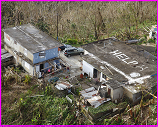 Hurricanes, earthquakes, and other destructive events offer timely “teachable moments” about the role of engineers in improving weather forecasts and reducing the toll from natural disasters. eGFI Teachers’s collection of activities, feature articles, and other resources can help you integrate engineering into your classes – and inspire the next generation of “crisis” engineers.
Hurricanes, earthquakes, and other destructive events offer timely “teachable moments” about the role of engineers in improving weather forecasts and reducing the toll from natural disasters. eGFI Teachers’s collection of activities, feature articles, and other resources can help you integrate engineering into your classes – and inspire the next generation of “crisis” engineers.
Read More
Filed under: Class Activities, Grades 6-8, Grades 6-8, Grades 9-12, Grades 9-12, Grades K-5, Grades K-5, Lesson Plans, Special Features | Comments Off on Disaster Engineering
Tags: Army Corps of Engineers, build, building, Class Activities, data, Disaster relief, drought, Engineering, Environmental Engineering, erosion, forces, hurricane, Hurricane Maria, measure, Mining, motion, National Guard, natural disasters, Physics, rescue, storm, Structural Engineering, Teacher Resources, Technology, tornado, Weather, Web Resources
Posted on September 22nd, 2017 by Mary Lord
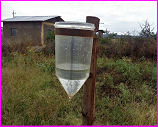 Working in groups of 8, middle school students use their senses to describe and predict the weather, then act as state park engineers and design/build “backyard weather stations” to gather data to make actual weather forecasts.
Working in groups of 8, middle school students use their senses to describe and predict the weather, then act as state park engineers and design/build “backyard weather stations” to gather data to make actual weather forecasts.
Read More
Filed under: Class Activities, Grades 6-8, Grades 6-8, Lesson Plans | Comments Off on Backyard Weather Station
Tags: air mass, Class Activities, clouds, cold front, data, Design, Earth Science, Environmental science, forecast, Grades 6-8, hurricane, Lesson Plan, measurement, Meteorology, NGSS, thermometer, Weather, weather station
Posted on August 10th, 2017 by Mary Lord
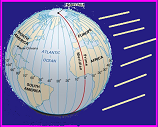 Middle school students learn about the Earth’s geometrical relation to the sun by calculating where the sun will be in the sky for any date or time given a particular location on Earth, such as their school. The three-activity module was developed by lighting engineer Tony Esposito, Ph.D., during his graduate studies at Pennsylvania State University and made available to eGFI Teachers.
Middle school students learn about the Earth’s geometrical relation to the sun by calculating where the sun will be in the sky for any date or time given a particular location on Earth, such as their school. The three-activity module was developed by lighting engineer Tony Esposito, Ph.D., during his graduate studies at Pennsylvania State University and made available to eGFI Teachers.
Read More
Filed under: Class Activities, Grades 6-8, Lesson Plans, Special Features | Comments Off on Solar Geometry
Tags: angle, calendar, Class Activities, day, earth sciences, eclipse, Environmental Engineering, Environmental science, Geometry, globe, Grades 6-8, latitude, Lesson Plans, light engineering, longitude, map, Mathematics, NASA, Project CANDLE, season, Solar Geometry, sun, Tony Esposito Jr.
Posted on August 4th, 2017 by Mary Lord
 eGFI caught up with lighting engineer Tony Esposito, who developed this month’s “solar geometry” lesson while earning a Ph.D. in architectural engineering at Pennsylvania State University, to learn more about his background and what sparked his interest in engineering and education. Check out his story – and tips for teachers!
eGFI caught up with lighting engineer Tony Esposito, who developed this month’s “solar geometry” lesson while earning a Ph.D. in architectural engineering at Pennsylvania State University, to learn more about his background and what sparked his interest in engineering and education. Check out his story – and tips for teachers!
Read More
Filed under: Class Activities, K-12 Outreach Programs, Lesson Plans, Special Features | Comments Off on Meet Lighting Engineer Tony Esposito
Tags: architectural engineering, lighting engineering, Penn State, Project CANDLE, Solar Geometry, STEM education, Tony Esposito
Posted on July 3rd, 2017 by Mary Lord
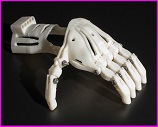 Working in groups of three, middle school students learn about types of forces, the relationship between form and function, and the structure of the hand by working as biomedical engineers to design, build, and test their own hand “gripper” prototypes that can grasp and lift a 200 ml cup of sand.
Working in groups of three, middle school students learn about types of forces, the relationship between form and function, and the structure of the hand by working as biomedical engineers to design, build, and test their own hand “gripper” prototypes that can grasp and lift a 200 ml cup of sand.
Read More
Filed under: Class Activities, Grades 6-8, Grades 6-8, Lesson Plans | Comments Off on Lend A Hand: Teaching Forces
Tags: adaptive device, anatomy, assistive technology, Biomedical Engineering, Class Activities, Design, disability, forces, Grades 6-8, hand, Lesson Plan, prosthetic
Posted on May 30th, 2017 by Mary Lord
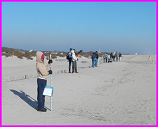 High school students working in groups of three to four learn about the primary causes and impacts of coastal erosion, and use elevation data to construct profiles of a beach over time or to compare several beaches, make inferences about the erosion process, and discuss how humans should respond.
High school students working in groups of three to four learn about the primary causes and impacts of coastal erosion, and use elevation data to construct profiles of a beach over time or to compare several beaches, make inferences about the erosion process, and discuss how humans should respond.
Read More
Filed under: Class Activities, Grades 9-12, Grades 9-12, Grades 9-12, Lesson Plans | Comments Off on Who Moved the Beach?
Tags: beach, Civil Engineering, Class Activities, coastal erosion, coastal management, data analysis, Earth Science, Environmental Engineering, erosion, Grades 9-12, jetties, Lesson Plan, NOAA, USGS
Posted on May 4th, 2017 by Mary Lord
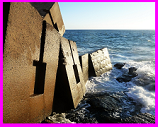 Students in grades 3 to 8 study coastal erosion and the apply the engineering design process to devise structures and policies to protect shorelines, taking public concerns into account.
Students in grades 3 to 8 study coastal erosion and the apply the engineering design process to devise structures and policies to protect shorelines, taking public concerns into account.
Read More
Filed under: Class Activities, Grades 6-8, Grades 6-8, Grades 6-8, Grades K-5, Grades K-5, Grades K-5, Lesson Plans | Comments Off on Save Our Shore!
Tags: beach, Civil Engineering, Class Activities, coastal engineering, Earth Science, Engineering Design Process, Environmental Engineering, erosion, Grades 6-8, Grades K-5, Lesson Plan, Marine Science, sand
Posted on February 16th, 2017 by Mary Lord
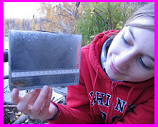 Middle school students learn that ordinary people like themselves can make meaningful contributions to science by reviewing examples of citizen science projects on Zooniverse, an interactive website. They then form “engineering teams” to brainstorm projects for their own community and design conceptual interactive websites that could organize and support them.
Middle school students learn that ordinary people like themselves can make meaningful contributions to science by reviewing examples of citizen science projects on Zooniverse, an interactive website. They then form “engineering teams” to brainstorm projects for their own community and design conceptual interactive websites that could organize and support them.
Read More
Filed under: Class Activities, Grades 6-8, Grades 6-8, Lesson Plans | Comments Off on Citizen Science
Tags: Citizen Science, Class Activities, data analysis, environment, Grades 6-8, Lesson Plan, Website
 Students follow the engineering design process to design and build a usable device to propel school T-shirts up into the stands during home sporting events while keeping costs under budget.
Students follow the engineering design process to design and build a usable device to propel school T-shirts up into the stands during home sporting events while keeping costs under budget. 








 Hurricanes, earthquakes, and other destructive events offer timely “teachable moments” about the role of engineers in improving weather forecasts and reducing the toll from natural disasters. eGFI Teachers’s collection of activities, feature articles, and other resources can help you integrate engineering into your classes – and inspire the next generation of “crisis” engineers.
Hurricanes, earthquakes, and other destructive events offer timely “teachable moments” about the role of engineers in improving weather forecasts and reducing the toll from natural disasters. eGFI Teachers’s collection of activities, feature articles, and other resources can help you integrate engineering into your classes – and inspire the next generation of “crisis” engineers. Working in groups of 8, middle school students use their senses to describe and predict the weather, then act as state park engineers and design/build “backyard weather stations” to gather data to make actual weather forecasts.
Working in groups of 8, middle school students use their senses to describe and predict the weather, then act as state park engineers and design/build “backyard weather stations” to gather data to make actual weather forecasts. Middle school students learn about the Earth’s geometrical relation to the sun by calculating where the sun will be in the sky for any date or time given a particular location on Earth, such as their school. The three-activity module was developed by lighting engineer Tony Esposito, Ph.D., during his graduate studies at Pennsylvania State University and made available to eGFI Teachers.
Middle school students learn about the Earth’s geometrical relation to the sun by calculating where the sun will be in the sky for any date or time given a particular location on Earth, such as their school. The three-activity module was developed by lighting engineer Tony Esposito, Ph.D., during his graduate studies at Pennsylvania State University and made available to eGFI Teachers. eGFI caught up with lighting engineer Tony Esposito, who developed this month’s “solar geometry” lesson while earning a Ph.D. in architectural engineering at Pennsylvania State University, to learn more about his background and what sparked his interest in engineering and education. Check out his story – and tips for teachers!
eGFI caught up with lighting engineer Tony Esposito, who developed this month’s “solar geometry” lesson while earning a Ph.D. in architectural engineering at Pennsylvania State University, to learn more about his background and what sparked his interest in engineering and education. Check out his story – and tips for teachers! Working in groups of three, middle school students learn about types of forces, the relationship between form and function, and the structure of the hand by working as biomedical engineers to design, build, and test their own hand “gripper” prototypes that can grasp and lift a 200 ml cup of sand.
Working in groups of three, middle school students learn about types of forces, the relationship between form and function, and the structure of the hand by working as biomedical engineers to design, build, and test their own hand “gripper” prototypes that can grasp and lift a 200 ml cup of sand. High school students working in groups of three to four learn about the primary causes and impacts of coastal erosion, and use elevation data to construct profiles of a beach over time or to compare several beaches, make inferences about the erosion process, and discuss how humans should respond.
High school students working in groups of three to four learn about the primary causes and impacts of coastal erosion, and use elevation data to construct profiles of a beach over time or to compare several beaches, make inferences about the erosion process, and discuss how humans should respond. Students in grades 3 to 8 study coastal erosion and the apply the engineering design process to devise structures and policies to protect shorelines, taking public concerns into account.
Students in grades 3 to 8 study coastal erosion and the apply the engineering design process to devise structures and policies to protect shorelines, taking public concerns into account. Middle school students learn that ordinary people like themselves can make meaningful contributions to science by reviewing examples of citizen science projects on Zooniverse, an interactive website. They then form “engineering teams” to brainstorm projects for their own community and design conceptual interactive websites that could organize and support them.
Middle school students learn that ordinary people like themselves can make meaningful contributions to science by reviewing examples of citizen science projects on Zooniverse, an interactive website. They then form “engineering teams” to brainstorm projects for their own community and design conceptual interactive websites that could organize and support them.